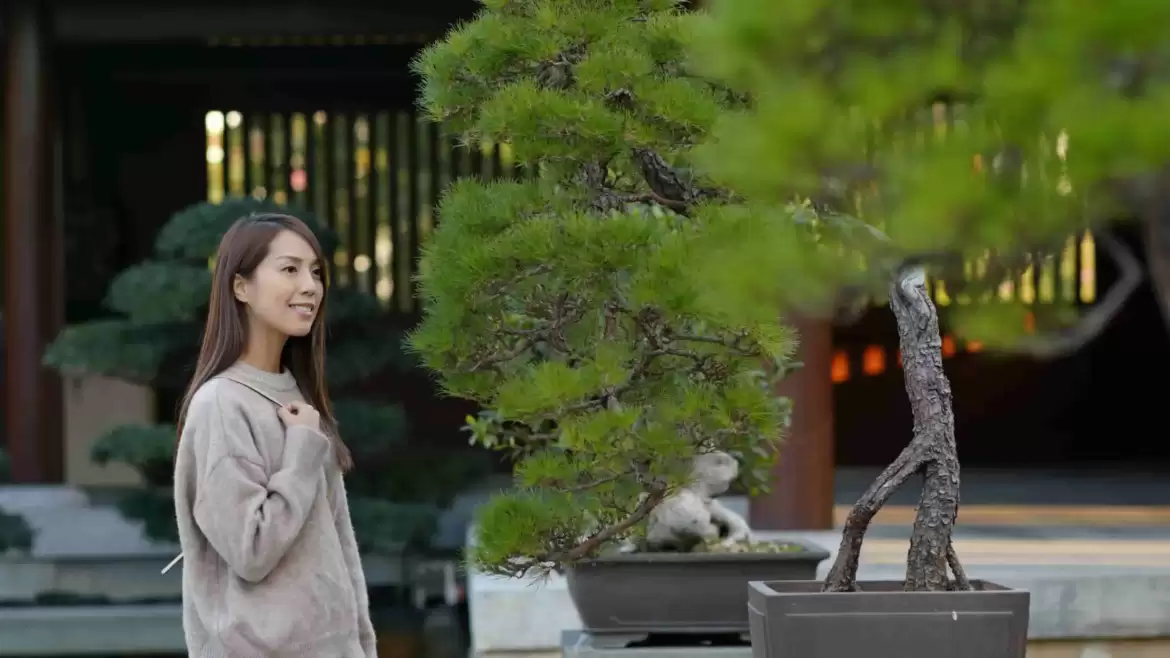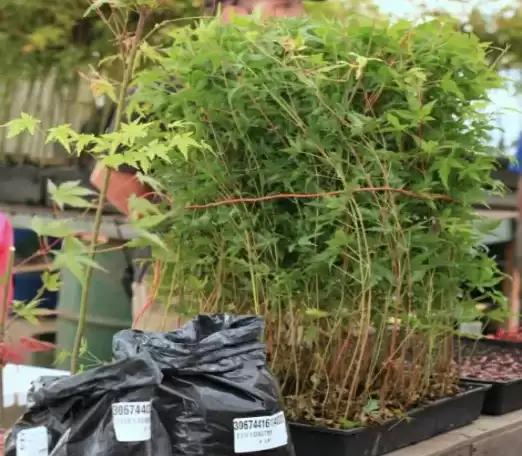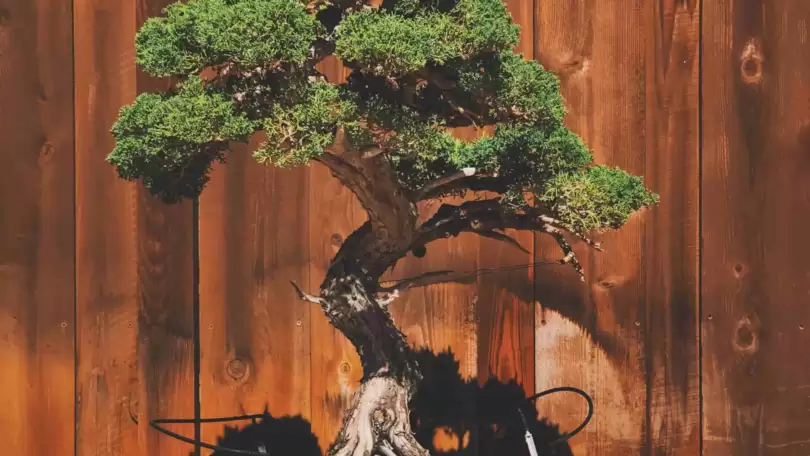14 Common Bonsai Styles Should be Know – Ultimate Guide
What is a Bonsai Styles?

Bonsai trees can be trimmed and pruned into various shapes and styles. To achieve a specific kind, you’ll need to trim regularly, shape, and prune your tree. The following are 14 bonsai styles to spark your interest in truly getting creative with your first bonsai. These styles include:
- Formal Upright Style (Chokkan)
- Informal Upright Style (Moyogi)
- Slanting Style (Shakan Bonsai)
- Cascade Style (Kengai)
- Semi Cascade Style (Han-kengai)
- Literati Style (Bunjingi)
- Broom Style (Hokidachi)
- Windswept Style (Fukinagashi)
- Double Trunk Style (Sokan)
- Multi-trunk Style (Kabudachi)
- Forest Style (Yoseue)
- Growing on a Rock Style (Seki-joju)
- Raft Style (Ikadabuki)
- Shari Style (Sharimiki)
Formal Upright Style (Chokkan)
The Chokkan bonsai style is the most formal upright style. It is often used for plants that are indigenous to the area, such as pines, junipers, and maples. A straight trunk characterizes this style, and the leaves should be placed evenly along the branches.
The leaves should be slightly larger than leaves in other styles. The Chokkan style originated in Japan during the Edo period. It was used to display plants that were native to the area, and it quickly became popular among bonsai enthusiasts.
This style often occurs in nature, especially when a tree is trying to reach the sunlight. The tree’s apex will be pointing upwards, and the roots will be visible.
The formal upright style is the most popular style for bonsai trees. It involves trimming the tree into a tall, narrow shape with a symmetrical canopy. To create a formal upright style bonsai, you’ll need to trim the tree regularly. You’ll also need to prune the roots to keep them small and compact.

Informal Upright Style (Moyogi)
The Moyogi bonsai style originated from the Edo period in Japan. It is the most common type of bonsai, and it can be used for various plants. The informal upright style is typical in the wild and the art of bonsai.
The trunk grows in an upright fashion; however, it will be curved rather than straight. This curve can be either S-shaped or windswept. The branches will also be asymmetrical, and the tree’s apex will point upwards.
The informal upright style is similar to the formal upright style but with a few key differences. The most obvious difference is that the trunk is curved rather than straight. This gives the tree a more natural look. The branches are also asymmetrical, and the tree’s apex points upwards.
To create an informal upright style bonsai, you’ll need to trim the tree regularly. It involves trimming the tree into a tall, narrow shape but with a less symmetrical canopy.
The branches should be unevenly spaced and point in different directions. You won’t need to prune the roots, but you should keep them trimmed and compact.
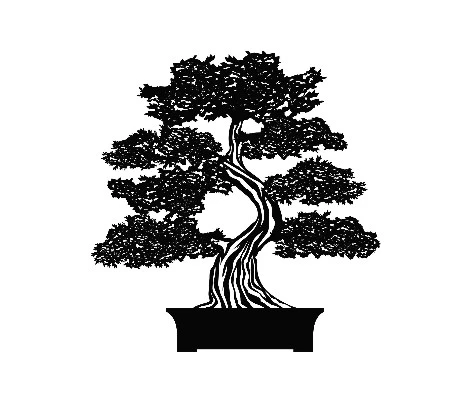
YouTube Bonsai
Slanting Style (Shakan Bonsai)
The Shakan bonsai style was first seen in the late 1800s in Japan. It is used for plants that have a strong inclination to grow sideways. The slanting type is often used for bonsai trees with a broad base and a thin top. The trunk will be angled, and the branches will grow at a 45-degree angle.
The Shakan bonsai is often used when a tree leans because of the wind blowing in one particular direction or when a tree grows in the shade and must bend toward the sun; it will lean in one direction. The leaning style should grow at a 45–60-degree angle from the soil with bonsai.
The shakan bonsai are created by trimming the tree into a tall, narrow shape that leans to one side. The branches should be evenly spaced and pointing in different directions.
To create a shakan bonsai, you’ll need to trim the tree regularly and use wiring to help shape the branches. You should also keep the roots trimmed and compact.
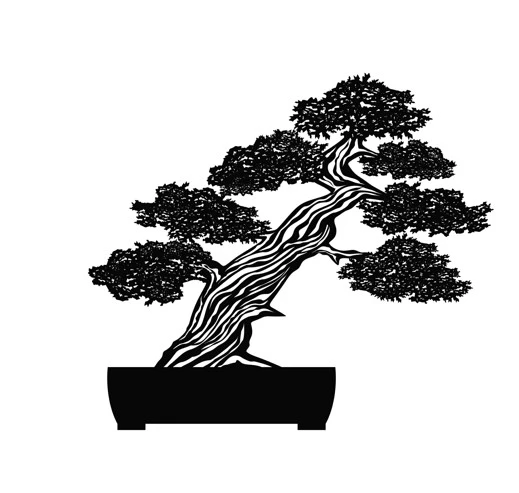
More Info About Bonsai Pests And Diseases
Cascade Style (Kengai)
This style imitates a tree living in nature that bends downwards, often due to the weight of the snow or falling rocks, and often hanging off a cliff. The cascade style should hang down two-thirds the height of the tree and must be able to support its weight.
The cascade style is created by trimming the tree into a tall, narrow shape that hangs downwards. The branches should be evenly spaced and pointing in different directions.
To create a cascade-style bonsai, you’ll need to trim the tree regularly. The tree must be able to support its weight, so it’s essential to make sure the trunk is strong. It would help if you also pruned the roots to keep them small and compact.
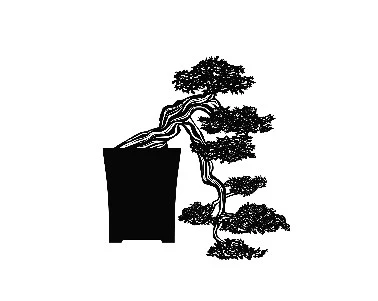
Semi Cascade Style (Han-kengai)
The Han-kengai bonsai is similar to the cascade style, but the tree is not allowed to hang below the pot. This style is often used for trees with a weeping or cascading growth habit and is found in the wild clinging precariously to cliffs or over the banks of lakes and rivers.
The tree branches are trained to grow downwards, often with long internodes between the branches. When styling a tree in the Han-kengai style, the most crucial consideration is to ensure that the branches grow downwards and not outwards. You can achieve this by wiring the branches and training them into the desired position.
The Han-kengai style is a popular choice for bonsai enthusiasts, as it can create an exquisite and graceful tree. It is important to remember that this style takes a long time to perfect, and it is not suitable for all tree species.
If you consider creating a bonsai in the Han-kengai style, it is important to choose a tree with a naturally cascading growth habit. Some of the most popular species for this style include Juniper, azalea, and elm.
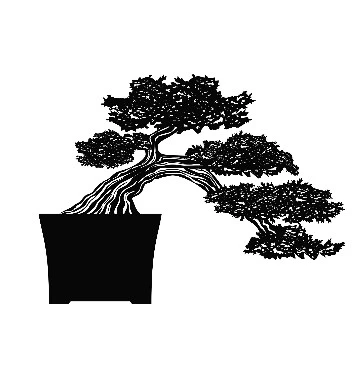
Literati Style (Bunjingi)
The literati style is characterized by a thin trunk, often with only a few branches. The leaves are small, and the tree’s overall shape is slender and elegant. In nature, this tree style is found in areas where the soil is poor, and the tree must struggle to survive.
The literati style is created by trimming the tree into a tall, slender shape with only a small canopy. The leaves should be small, and the branches should be evenly spaced.
To create a literati-style bonsai, you’ll need to trim the tree regularly. The tree must be able to support its weight, so it’s essential to make sure the trunk is strong. It would be best if you also pruned the roots to keep them small and compact.
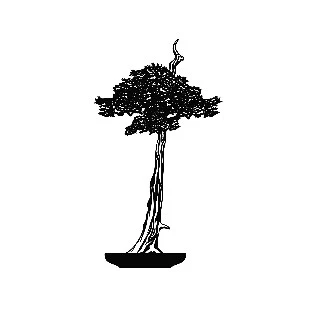
Broom Style (Hokidachi)
This style is used for trees with a wide, flat top and a thin trunk. The branches will grow outwards from the trunk in all directions, creating a broad canopy.
The broom style is often used for trees repotted in a shallow pot, as it gives the tree a more natural appearance.
When styling a tree in the broom style, the most crucial consideration is to ensure that the branches are evenly spaced and pointing in different directions. You can achieve this by wiring the branches and training them into the desired position.
The broom style is a popular choice for bonsai enthusiasts, as it can create a beautiful and graceful tree. It is important to remember that this style takes a long time to perfect, and it is not suitable for all tree species.
Choosing a tree with a naturally broad growth habit is vital if you consider creating a bonsai in the broom style. Some of the most popular species for this style include elm, maple, and oak.
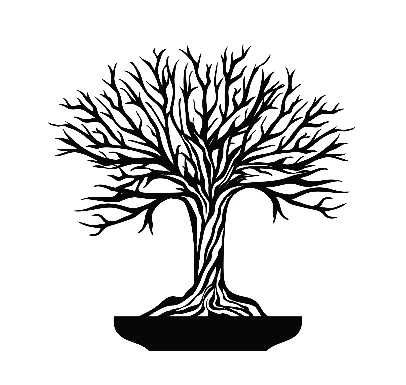
Windswept Style (Fukinagashi)
This style is used for trees with a thin trunks and long, sweeping branches. The overall shape of the tree should resemble a windblown tree in nature. The windswept style is created by wiring the branches and training them into the desired position.
The windswept style is a popular choice for bonsai enthusiasts, as it can create a magnificent and graceful tree. It is important to remember that this style takes a long time to perfect, and it is not suitable for all tree species.
If you are considering creating a bonsai in the windswept style, it is vital to choose a tree that has a naturally thin growth habit. Some of the most popular species for this style include elm, maple, and oak.
This style is ideal for trees with a long, thin trunk and few branches. A narrow canopy will be formed as the branches grow outwards from the trunk in one direction.
The windswept style is often used for trees re-potted in a shallow pot, as it gives the tree a more natural appearance.
When designing a tree in the windswept style, keep in mind that the branches should be evenly spaced and pointing in the same direction. You can achieve this by wiring the branches and training them into the desired position.
It is important to remember that this style takes a long time to perfect, and it is not suitable for all tree species.
If you are considering creating a bonsai in the windswept style, it is essential to choose a tree that has a naturally long, slender growth habit. Some of the most popular species for this style include elm, maple, and oak.
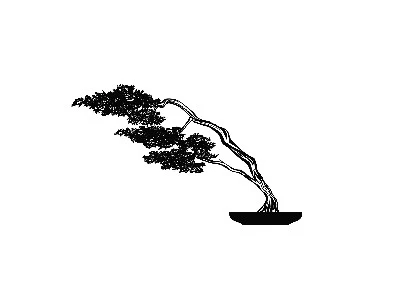
Double Trunk Style (Sokan)
One of the most classic and elegant bonsai styles is the double trunk or sokan. In this style, two trunks emerge from a single root system and grow parallel to one another. The trunks may be of unequal size, but they should be approximately the same length.
The branches on each trunk should also be roughly equal in size, and the foliage should be symmetrical on both trunks. This style is often used with conifers, but deciduous trees can also be used.
There are a few things to keep in mind when styling a tree in the double trunk style:
- Make sure that the two trunks are of relatively equal thickness. If one trunk is significantly thicker than the other, it will look out of proportion.
- The trunks should taper evenly from the base to the top.
- The branches on each trunk should be arranged to be pleasing to the eye.
One of the challenges of this style is keeping the two trunks evenly balanced. This can be difficult, especially if the tree is not symmetrical.
It is essential to carefully consider the placement of each branch and leaves so that the tree looks balanced overall. The double trunk style is a classic bonsai style that can be challenging to master.
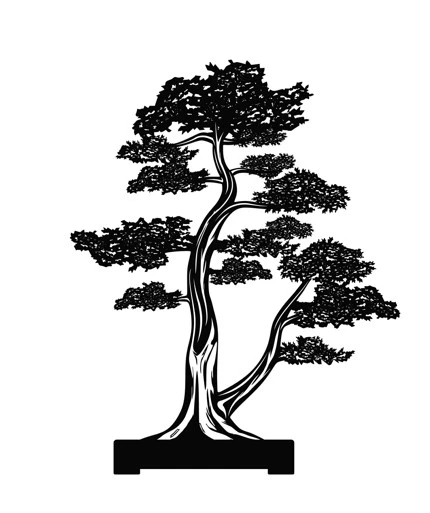
Multi-trunk Style (Kabudachi)
The Kabudachi style, also known as the multi-trunk style, is one of the most popular bonsai styles. This style features multiple trunks that emerge from a single point or root system.
The trunks can be of different thicknesses and lengths, and they may branch out in different directions. The branches are often arranged symmetrically, and the leaves are typically small and neat.
The Kabudachi style is often used to create dramatic or formal bonsai trees. It can be used to showcase the beauty of a single tree species, or it can be used to show off the diversity of a forest scene. The multi-trunk style is also well-suited for creating bonsai trees with a strong visual impact.
If you’re looking to create a bonsai tree in the Kabudachi style, choosing a well-suited species for this type of treatment is crucial.
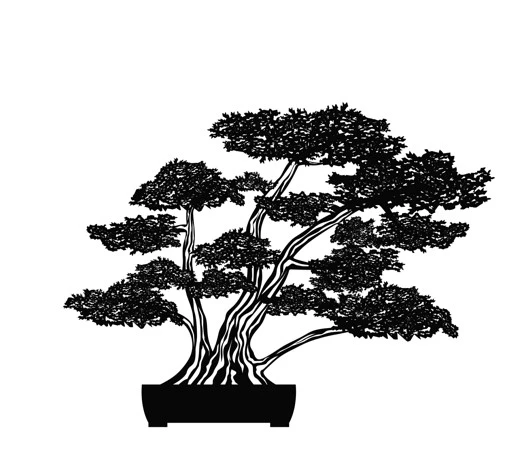
Forest Style (Yose-ue)
This style features multiple trees planted close together in a single pot. The trees can be of different sizes. The branches of each tree should be arranged to create a pleasing composition, and the leaves should be small and neat.
The forest style is often used to create dramatic or informal bonsai trees. It can be used to showcase the beauty of a single tree species, or it can be used to show off the diversity of a forest scene. The forest style is also well-suited for creating bonsai trees with a strong visual impact.
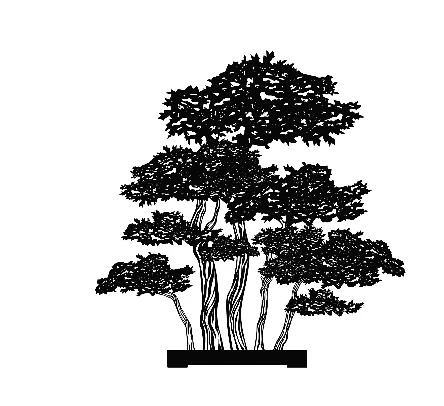
Growing on a Rock Style (Seki-joju)
Bonsai on a rock is a unique style of bonsai that can be very difficult to master. The tree needs to be carefully trained to grow in the limited space on the rock, and it takes a lot of time and effort to keep the tree healthy and looking good.
However, this style can be awe-inspiring and add interest to any bonsai collection when done correctly. There are several different ways to grow a tree on a rock. One popular method is to use a pre-made rock or driftwood with holes drilled and then wire the tree in place.
Alternatively, you can use a natural rock, which can be a little more challenging and more rewarding. The most important thing is to ensure that the rock is stable and will not move around; otherwise, the tree can quickly become damaged or die.
The best trees for this style are deciduous trees since they have robust root systems that can withstand the limited growing space. Conifers are not well suited for this style as they tend to have shallow root systems that can easily be damaged. Some of the best trees for this style include maples, oaks, and elms.
Once you have chosen the right tree and rock, it is time to start training the tree. This can be done by carefully bending and shaping the branches to create the desired shape. It is important to be very careful when doing this, as it is easy to damage the tree if you are not careful. Once the tree has been trained into the desired shape, it will need to be wired in place to stay in that position.
Once the tree is in place, you will need to water it regularly and fertilize it to stay healthy. Bonsai on a rock can be a bit more challenging to care for than other bonsai styles, but as long as you are careful and give the tree the attention it needs, it should do just fine.
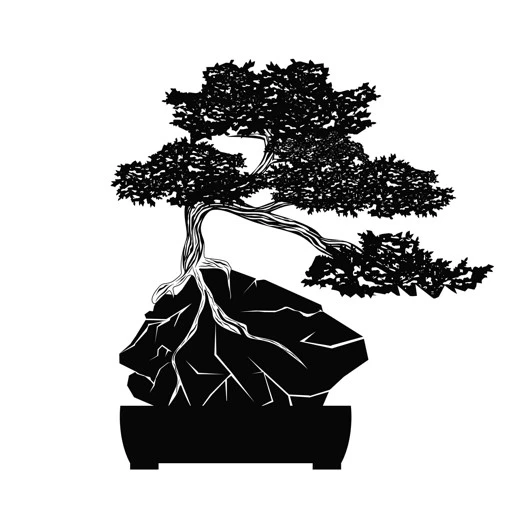
Raft Style (Ikadabuki)
This is a unique style of bonsai in which the tree is growing out of a hollowed-out log or piece of driftwood. The roots are exposed, and the tree is often styled to look like it’s clinging to its precarious perch.
Raft-style bonsai are often created with fast-growing tree species like elm, cedar, and juniper. The tree will quickly consume the driftwood or log, making a natural bonsai pot.
The raft style is popular for beginner bonsai enthusiasts because it is relatively easy to create without special tools or materials.
If you’re interested in creating a raft-style bonsai, we recommend starting with a fast-growing tree species such as elm, cedar, or juniper. Once you’ve selected your tree, simply hollow out a log or piece of driftwood and plant your tree inside.
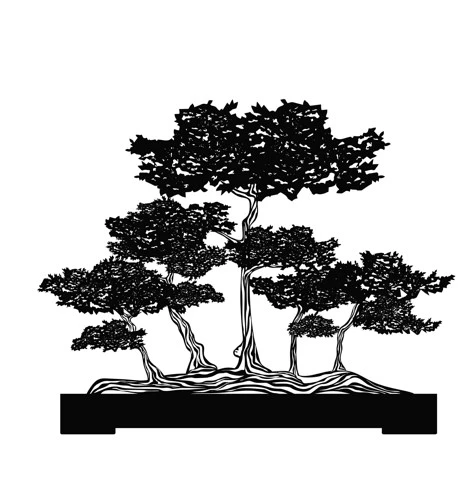
Shari Style (Sharimiki)
The shari style is popular for enthusiasts who want to create a bonsai with an aged and weathered look. The tree is usually planted in a pot that has been carved to resemble a dead trunk, and the branches are styled to look like they are growing out of decaying wood.
Shari-style bonsai are often created with slow-growing tree species such as pine and fir. This is because it can take many years for the tree to achieve the desired aged appearance.
The shari style is a popular choice for intermediate bonsai enthusiasts because it requires some basic carving skills and patience.
If you’re interested in creating a shari-style bonsai, we recommend starting with a slow-growing tree species such as pine or fir. Once you’ve selected your tree, carve a pot to resemble a dead trunk and plant your tree inside.
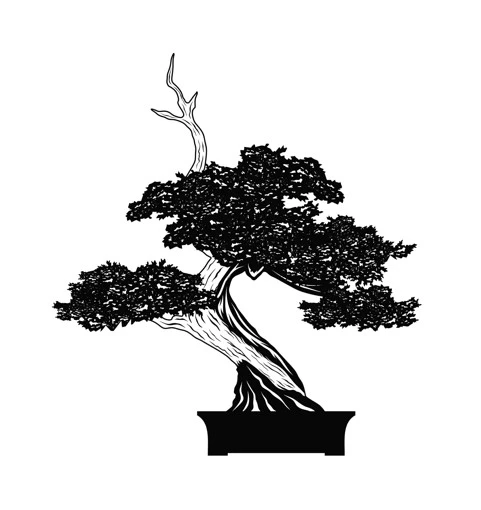
Once you’ve taken all of these factors into consideration, you should have a good idea of what type of bonsai tree you’d like to grow. If you’re still unsure, I recommend checking the Best Bonsai Trees for Beginners list, covered earlier in Here.

